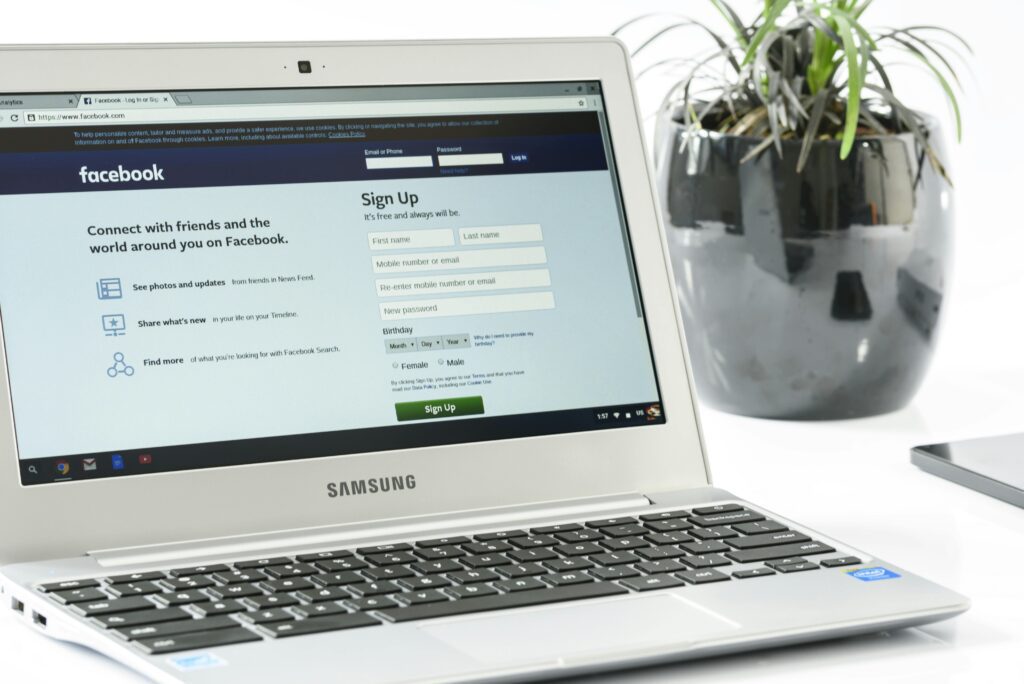In today’s hyper-competitive ecommerce landscape, businesses lose up to 4% of their annual sales due to inventory shortages, while stock availability alerts have emerged as a critical tool for recapturing lost revenue[1]. These automated notification systems represent a pivotal strategy in digital marketing, enabling brands to transform disappointing out-of-stock experiences into powerful sales opportunities. Stock availability alerts: capturing demand when products return has become essential for modern retailers seeking to maintain customer relationships and maximize conversion potential during inventory fluctuations.
What Are Stock Availability Alerts in Digital Marketing?
Stock availability alerts are automated notification systems that inform customers when previously out-of-stock products become available again. These alerts typically operate through email or SMS channels, notifying interested customers the moment their desired items are restocked. The core components of effective stock availability alerts include customer contact capture mechanisms, inventory monitoring systems, automated triggering processes, and personalized messaging templates.
The system works by allowing customers to subscribe to notifications for specific products when they encounter out-of-stock situations[5]. Once inventory is replenished, the system automatically sends targeted messages to subscribers, creating a direct line of communication between retailers and interested buyers[3]. This approach transforms potential lost sales into future revenue opportunities while maintaining customer engagement during stockout periods[6].
Why Stock Availability Alerts Matter in Today’s Digital Marketing Landscape
Stock availability alerts have become increasingly relevant in digital marketing due to their measurable impact on customer retention and revenue recovery[7]. Research indicates that 63% of online shoppers prefer receiving stock availability notifications for convenience, while these alerts can boost customer engagement by up to 20%[8]. The effectiveness of these systems is particularly evident in their impressive performance metrics, with back-in-stock emails achieving open rates as high as 65.32%[9].
The financial impact of stock availability alerts is substantial, with businesses reporting significant revenue recovery through these systems[10]. Home Depot captured $600 million in lost opportunity through their alert system, while driving $2 million in recaptured online sales monthly[10]. Similarly, JCPenney’s implementation resulted in over 955,000 customer sign-ups and $500,000 in monthly recaptured sales[10]. These statistics demonstrate that stock availability alerts can achieve conversion rates of 7.28%, significantly outperforming many traditional marketing channels[9].
The growing importance of mobile commerce further amplifies the relevance of stock availability alerts[11]. With consumers checking their mobile devices up to 200 times daily and engaging with SMS alerts within 90 seconds, these notifications provide immediate access to interested customers[11]. Additionally, 66.5% of consumers are signing up to receive text messages from brands, with 58% specifically requesting restock alerts via SMS[12].
The Psychology Behind Stock Availability Alerts and Consumer Behavior
Stock availability alerts leverage powerful psychological principles that drive consumer behavior and purchasing decisions. The Fear of Missing Out (FOMO) serves as the primary psychological trigger, creating anxiety about potentially missing rewarding experiences or opportunities. This emotional response is particularly effective when combined with scarcity messaging, as customers who previously encountered out-of-stock situations are already primed to act quickly when notified of availability.
Loss aversion psychology plays a crucial role in the effectiveness of stock availability alerts[15]. Consumers naturally fear losing opportunities more than they value potential gains, making them more likely to act immediately upon receiving restock notifications[15]. This principle is amplified by the anticipation and regret mechanism, where customers fear regretting their failure to act quickly on limited opportunities[13]. The psychological impact is further enhanced by social proof elements, as out-of-stock situations signal product popularity and desirability to consumers[16].
Scarcity psychology fundamentally drives the urgency created by stock availability alerts. When products are restocked after being unavailable, the perceived scarcity increases their value and desirability in customers’ minds. This scarcity effect is supported by research showing that demand-based scarcity significantly influences consumer purchase intentions, particularly when combined with social proof indicators. The psychological principle of uniqueness theory explains how limited availability makes products more attractive to consumers seeking distinctive purchases.
How Stock Availability Alerts Work in Practice
The implementation of stock availability alerts follows a systematic process that begins with customer interest capture. When customers encounter out-of-stock products, they are presented with subscription options to receive notifications when items become available. This initial step typically involves simple email or phone number capture through user-friendly forms positioned prominently on product pages.
The second step involves inventory monitoring systems that track stock levels in real-time. These systems continuously monitor product availability and automatically detect when previously out-of-stock items are replenished. For example, major retailers like Amazon use sophisticated inventory management systems that trigger alerts the moment products return to stock.
The third step encompasses automated alert triggering and message delivery[3]. Once inventory is detected, the system automatically sends personalized notifications to subscribers through their preferred channels[11]. Companies like Klaviyo have perfected this process, enabling retailers to send targeted emails within minutes of restocking[9].
The fourth step focuses on message optimization and personalization. Effective alerts include clear product information, compelling call-to-action buttons, and personalized messaging that addresses customers by name. The fifth step involves timing optimization, ensuring alerts are sent immediately upon restocking to maximize conversion potential. Finally, the sixth step includes performance tracking and analytics to measure alert effectiveness and optimize future campaigns.
Why Stock Availability Alerts Prove Highly Effective for Revenue Recovery
Stock availability alerts demonstrate exceptional effectiveness due to their high intent targeting capabilities[21]. Unlike traditional marketing messages sent to broad audiences, these alerts reach customers who have already expressed explicit interest in specific products[6]. This targeted approach results in significantly higher engagement rates, with restock alerts achieving open rates exceeding 65% compared to typical email marketing benchmarks[22].
The timing advantage of stock availability alerts contributes significantly to their effectiveness. These notifications arrive when customer interest is at its peak, immediately following product restocking[9]. Research indicates that 60% of customers read SMS alerts within 1-5 minutes of delivery, enabling rapid response to restock notifications. This immediate engagement window maximizes conversion potential before customers lose interest or find alternative products.
The personalization factor enhances alert effectiveness by creating relevant, timely connections with customers. These alerts demonstrate that retailers remember customer preferences and take actionable steps to satisfy their needs. This personalized approach strengthens brand affinity and customer loyalty, with studies showing that 63% of SMS subscribers make purchases within three months of receiving marketing messages[12].
The conversion performance of stock availability alerts significantly outperforms traditional marketing channels[6]. While standard back-in-stock notifications achieve 5-15% conversion rates, optimized systems can reach much higher performance levels[6]. Case studies demonstrate that businesses implementing comprehensive alert systems recover substantial revenue, with some companies reporting millions in monthly recaptured sales.
How to Implement Stock Availability Alerts for Maximum Impact
Successful implementation of stock availability alerts begins with selecting appropriate technology platforms and tools. WordPress users can leverage plugins like Smart Stock Notifications for WooCommerce, which provides automated email notifications and customizable templates without requiring technical setup. Shopify merchants can utilize apps like NotifyMe, which automatically adds signup forms to product pages and monitors inventory levels[5]. For advanced implementations, platforms like Klaviyo offer sophisticated automation capabilities with high-performance email delivery systems.
The second implementation step involves designing effective capture mechanisms and user interfaces. Create prominent “Notify Me” buttons on out-of-stock product pages that are visually appealing and easy to use[5]. Implement guest subscription options to maximize signup rates, as many customers prefer not to create accounts for simple notifications[4]. Consider dual-channel approaches, offering both email and SMS notification options to accommodate customer preferences.
The third step focuses on developing compelling message templates and content strategies. Design email templates that include clear product information, high-quality images, and prominent call-to-action buttons. Personalize messages by addressing customers by name and referencing their specific product interests[2]. Create urgency through messaging that emphasizes limited availability and encourages immediate action.
The fourth implementation step involves integrating alert systems with existing inventory management processes. Connect notification systems directly to inventory databases to ensure real-time accuracy. Implement threshold-based triggering to send alerts immediately when products become available[24]. For businesses with multiple locations, configure location-specific alerts to provide relevant availability information.
The fifth step encompasses testing and optimization procedures[2]. Conduct A/B testing on message subject lines, content formats, and sending times to maximize open and conversion rates. Monitor key performance metrics including signup rates, open rates, click-through rates, and conversion rates[2]. Implement feedback loops to continuously improve alert effectiveness based on customer responses and sales data.
The sixth implementation step involves scaling and automation strategies[26]. Deploy automated inventory monitoring systems that operate without manual intervention. Create rule-based notification systems that can handle high-volume product catalogs efficiently. For enterprise implementations, consider advanced platforms like ASAP Systems, which offer comprehensive inventory alert capabilities with SMS and email integration.
Advanced Strategies for Maximizing Stock Availability Alert Performance

Beyond basic implementation, advanced stock availability alert strategies can significantly enhance performance and revenue recovery. Segmentation strategies allow retailers to create targeted alert campaigns based on customer demographics, purchase history, and engagement levels. For example, VIP customers might receive priority notifications or exclusive early access to restocked items. Geographic segmentation enables location-specific inventory alerts, particularly valuable for businesses with multiple warehouses or regional availability variations.
Cross-selling and upselling integration within stock availability alerts can increase average order values and customer lifetime value[3]. When notifying customers about restocked items, include recommendations for complementary products or upgraded versions. This approach transforms simple restock notifications into comprehensive shopping experiences that drive additional revenue beyond the original item interest.
Multi-channel orchestration strategies ensure consistent messaging across email, SMS, and push notification channels. Implement sequential messaging campaigns that begin with immediate email alerts followed by SMS reminders for non-responders[11]. Consider social media integration to create buzz around restocked items, particularly for limited-edition or high-demand products. The key is maintaining consistent branding and messaging while leveraging each channel’s unique strengths.
Measuring Success and Optimizing Stock Availability Alert Performance
Effective measurement of stock availability alert performance requires tracking multiple key performance indicators beyond basic conversion rates. Monitor signup conversion rates to understand how effectively out-of-stock pages capture customer interest. Track alert open rates and click-through rates to gauge message effectiveness and customer engagement levels. Most importantly, measure revenue attribution to quantify the direct financial impact of alert systems on business performance.
Customer retention metrics provide insights into the long-term value of stock availability alert programs[28]. Track repeat purchase rates among alert subscribers to understand how these notifications contribute to customer loyalty. Monitor customer lifetime value differences between alert subscribers and non-subscribers to quantify the program’s impact on long-term revenue. Additionally, measure customer satisfaction scores and feedback to ensure alert programs enhance rather than disrupt the customer experience.
Continuous optimization requires regular analysis of performance data and systematic testing of improvements. Conduct monthly reviews of alert performance metrics to identify trends and opportunities for enhancement[2]. Test different message formats, timing strategies, and personalization approaches to maximize effectiveness. Implement feedback mechanisms that allow customers to rate alert usefulness and provide suggestions for improvement[2].
Conclusion: The Strategic Imperative of Stock Availability Alerts
Stock availability alerts represent a fundamental strategy for modern digital marketing, offering measurable solutions to the universal challenge of inventory management and customer retention. The evidence demonstrates that these systems can recover millions in lost revenue while strengthening customer relationships through personalized, timely communication. The psychological principles underlying alert effectiveness—FOMO, scarcity, and loss aversion—create powerful motivation for customer action when properly implemented.
The implementation of stock availability alerts requires careful attention to technology selection, message design, and performance optimization. Success depends on choosing appropriate platforms, creating compelling user experiences, and continuously measuring and improving system performance. The investment in these systems yields substantial returns through increased conversion rates, improved customer satisfaction, and enhanced brand loyalty.
As ecommerce continues evolving toward more personalized and responsive customer experiences, stock availability alerts will become increasingly sophisticated and essential. The integration of artificial intelligence, predictive analytics, and omnichannel orchestration will further enhance these systems’ effectiveness. The strategic question for digital marketers is not whether to implement stock availability alerts, but how quickly and effectively they can deploy these powerful tools to capture demand when products return.
The future belongs to retailers who can seamlessly bridge the gap between customer desire and product availability, transforming every stockout into an opportunity for deeper customer engagement and future sales success.
Frequently Asked Questions About Stock Availability Alerts
How do stock availability alerts work and what makes them effective?
Stock availability alerts operate through automated notification systems that monitor inventory levels in real-time and instantly notify customers when previously out-of-stock products become available again. These systems typically integrate with inventory management platforms and trigger email or SMS alerts the moment restocking occurs. The effectiveness stems from their high-intent targeting approach, reaching customers who have already expressed explicit interest in specific products [3]. Research shows that back-in-stock notifications achieve impressive open rates of 65.32% and conversion rates ranging from 5-15%, significantly outperforming traditional marketing channels [4]. Their success is driven by optimal timing, personalized messaging, and the psychological principle of scarcity, making them one of the most effective customer retention tools in e-commerce.
What is the typical cost to implement stock availability alert systems?
The cost of implementing stock availability alerts varies significantly based on platform choice and business size [6]. For Shopify merchants using apps like SmartrMail, back-in-stock emails cost $0.02 per email sent on Essential plans, while Pro plans include unlimited notifications at no additional charge [6]. WordPress users can leverage free plugins like Stock Availability Alert for WooCommerce, which provides basic functionality without ongoing fees. Enterprise solutions may require custom development or premium platforms costing hundreds to thousands monthly, but studies show that businesses recover substantial revenue through these systems [3]. For example, Home Depot captured $600 million in lost opportunity through their alert system, demonstrating strong ROI potential that typically justifies implementation costs within months [4].
How long does it take to set up stock availability alerts for an online store?
The implementation timeline for stock availability alerts depends on the complexity of your chosen solution and existing infrastructure. Simple plugin installations on platforms like Shopify or WooCommerce can be completed within 15-30 minutes, requiring minimal technical expertise. These basic setups involve downloading the app, configuring notification templates, and enabling the alert system across product pages. More sophisticated implementations with custom integrations, advanced automation rules, and multi-channel notifications typically require 1-3 days for complete setup and testing [2]. Enterprise-level deployments with ERP integration, custom workflows, and extensive customization may take 1-2 weeks [2]. However, 78% of retailers report improved restocking efficiency immediately after implementation, making the initial time investment highly worthwhile for most businesses [9].
What’s the difference between inventory alerts and back-in-stock notifications?
While often used interchangeably, inventory alerts and back-in-stock notifications serve different purposes in supply chain management. Inventory alerts are primarily internal tools that notify business owners and managers when stock levels reach predetermined thresholds, helping prevent stockouts and manage reordering processes. These alerts typically trigger when inventory drops below specified quantities, enabling proactive inventory management. Back-in-stock notifications, conversely, are customer-facing communications that alert shoppers when previously unavailable products return to inventory. Research indicates that 63% of online shoppers prefer receiving these customer notifications for convenience [4]. Both systems can work together synergistically: inventory alerts help businesses maintain stock levels, while back-in-stock notifications capture customer demand and drive sales when restocking occurs.
Are there privacy concerns with stock availability alert systems?
Stock availability alert systems do collect personal information, but reputable platforms implement comprehensive privacy protections to safeguard customer data. When customers subscribe to alerts, systems typically collect email addresses, phone numbers, and product preferences necessary for notification delivery. Leading platforms like Shopify’s Back in Stock Alerts app clearly outline their data collection practices, including information about store visitors, contact details, and shopping behavior. However, studies show that 66.5% of consumers willingly sign up for text messages from brands, with 58% specifically requesting restock alerts via SMS, indicating customer comfort with sharing information for valuable notifications [4]. Businesses must ensure compliance with privacy regulations like GDPR and provide transparent opt-out mechanisms to maintain customer trust while delivering effective alert services.
- Nestify.io. “How Low Stock Alert Apps Drive Efficiency: Optimizing Inventory Management.” March 15, 2024. https://nestify.io/blog/top-low-stock-alert-apps/.
- Wisernotify.com. “What Are Back-in-Stock Alerts? | Definition, Relevance & Best Practices.” Accessed June 23, 2025. https://wisernotify.com/marketing-term/back-in-stock-alerts/.
- Digioh.com. “Boost Sales with Back-in-Stock Notifications.” May 13, 2025. https://www.digioh.com/blog/back-in-stock-notifications.
- WooCommerce.com. “Smart Stock Notifier.” June 16, 2025. https://woocommerce.com/products/smart-stock-notifier/.
- BigCommerce.com. “NotifyMe Integrations.” October 9, 2021. https://www.bigcommerce.com/apps/notifyme/.
- Cogsy.com. “The Ultimate Guide To Back-In-Stock Notifications.” March 16, 2024. https://cogsy.com/blog/back-in-stock-notifications/.
- Dotdigital.com. “How to use back in stock alerts to boost customer retention.” May 23, 2024. https://dotdigital.com/blog/back-in-stock/.
- Vedadigital.io. “7 Reasons to Use Product Availability Alerts Today (Save Time & Money).” December 26, 2024. https://vedadigital.io/blog/product-availability-alerts/.
- Glazedigital.com. “Guide: Creating Effective Winback Flows With Klaviyo.” June 2, 2025. https://glazedigital.com/get-back-in-business-guide-to-klaviyo-back-in-stock-flows/.
- Ignitetech.ai. “MyAlerts Case Studies and Use Cases.” Accessed June 23, 2025. https://ignitetech.ai/application/files/4116/1930/2368/MyAlerts_Use_Cases_Back-In-Stock_Notificaitons.pdf.
- Voyagesms.com. “Amplify Conversion Rates with Back-in-Stock SMS Alerts.” April 4, 2024. https://www.voyagesms.com/blog/amplify-conversion-rates-with-back-in-stock-sms-alerts.
- Swym.it. “Why use SMS as a channel for Back in Stock Alerts?” July 25, 2023. https://swym.it/why-use-sms-as-a-channel-for-back-in-stock-alerts/.
- Ngrow.ai. “The Psychology of FOMO: Leveraging Fear of Missing Out in Push Notifications for Increased Engagement.” June 12, 2025. https://www.ngrow.ai/blog/the-psychology-of-fomo-leveraging-fear-of-missing-out-in-push-notifications-for-increased-engagement.
- LinkedIn.com. “The Psychology of Scarcity: How to Use Urgency and FOMO to Drive Sales.” December 2, 2024. https://www.linkedin.com/pulse/psychology-scarcity-how-use-urgency-fomo-drive-les-moyes-09loc.
- Wisernotify.com. “Loss Aversion Marketing: Driving More Sales in 2025.” January 2, 2025. https://wisernotify.com/blog/loss-aversion-marketing/.
- Researchmgt.monash.edu. “Scarcity tactics in marketing: A meta-analysis of product scarcity effects on consumer purchase intentions.” Accessed June 23, 2025. https://researchmgt.monash.edu/ws/portalfiles/portal/423908416/392343368_oa.pdf.
- Crazyegg.com. “Scarcity and Urgency: The Psychology and Differences.” June 12, 2025. https://www.crazyegg.com/blog/urgency-scarcity/.
- Optimonk.com. “Top 10 Scarcity Examples That Create Urgency and Maximize Conversions.” October 31, 2024. https://www.optimonk.com/scarcity-examples/.
- WooCommerce.com. “Smart Stock Notifications.” June 19, 2025. https://woocommerce.com/products/smart-stock-notifications/.
- Visualping.io. “How to Get Notified when Products are Back in Stock.” May 17, 2024. https://visualping.io/blog/how-to-get-notified-when-products-are-back-in-stock.
- Emaillistvalidation.com. “Restock Alerts: The Email Marketing Secret for Repeat Sales.” Accessed June 23, 2025. https://emaillistvalidation.com/blog/restock-alerts-the-email-marketing-secret-for-repeat-sales/.
- Retainiq.io. “How to Set Up a Restock Email Flow for Conversions.” May 8, 2024. https://retainiq.io/blog/how-to-set-up-restock-alert-email/.
- Datacop.substack.com. “This is How We Quadrupled the Revenue from the Back-In-Stock Notifications.” September 29, 2023. https://datacop.substack.com/p/back-in-stock-notifications.
- Asapsystems.com. “Inventory Management Alert.” January 25, 2025. https://asapsystems.com/products/inventory-system/system-features/alerts/.
- WooCommerce.com. “Kymvex Inventory Alert.” January 18, 2025. https://woocommerce.com/products/kymvex-inventory-alert/.
- Codelessplatforms.com. “Automated Inventory Alerts & Notifications Solution.” June 3, 2025. https://www.codelessplatforms.com/solutions/inventory-alert/.
read more
Boost Revenue Now: Essential Advertising KPIs Every CEO Uses
Advertising Automation KPIs Every Marketer Should Track Picture this: companies are crushing it with $5.44 back…
10 Game-Changing Facebook Ads Workflows for 2025 Growth
Picture this: 76% of businesses using Facebook ads workflows slash their campaign management time by 30%….
10 Deadly Retargeting Mistakes Business Owners Make
Did you know that retargeting campaigns can boost conversion rates by up to 150%? Yet many…
10 Invoice Automation Workflows That Skyrocket Cash Flow Now
Are you still stuck with paper invoices and typing in data by hand? Here’s a…
Revolutionary: 10 Social Media Automation Strategies Crushing Competition
Imagine this: you’re staring at your calendar, heart racing as you realize your biggest event…
10 Hidden Price drop Automation Secrets Competitors Don’t Know
Did you know that 77% of businesses using marketing automation see increased conversion rates, while…







